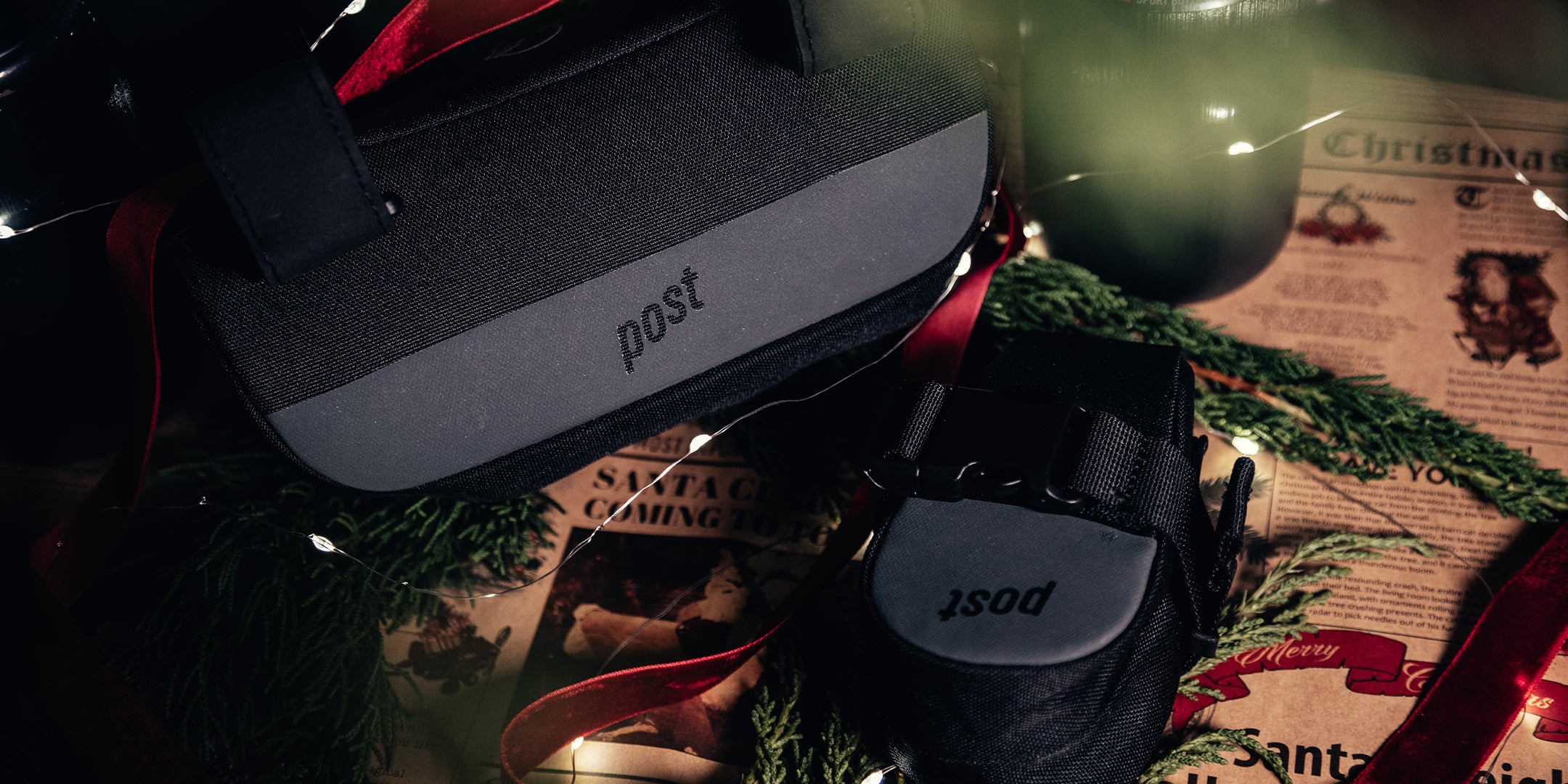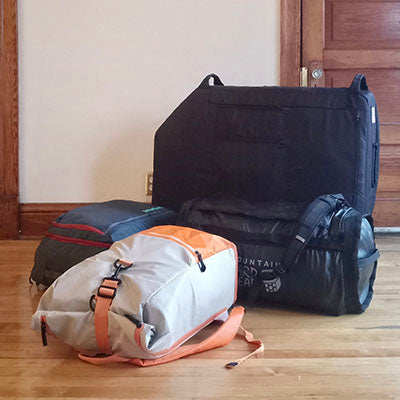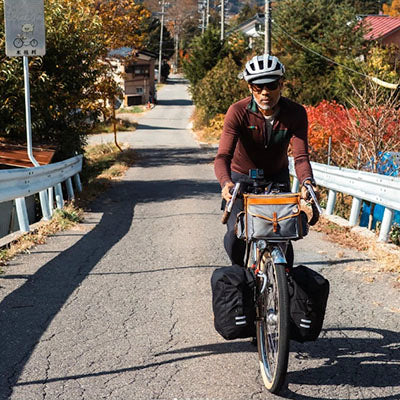The emergence of hidden cables and integrated handlebars and stems on high-end road and gravel bikes has made them more challenging to service and less travel-friendly. A debate surrounds the merits of these systems: Is the extra complexity justified? Do the claimed aero benefits truly deliver? Some still wish to pack their integrated bikes into a Transfer Case, but it's no longer as straightforward as "dropping the fork" for travel. Nonetheless, where there's a will, there's a way.
For this write-up, we assume your bike features a hydraulic disc braking system and an electronic shifting system.
Option A: Having enough slack in the system
The first option is applicable if your bike's brake hoses run under the stem, potentially allowing enough slack to remove the fork and pack it inside the Transfer Case. In this case, removing the fork is similar to a "normal" bike, and you can rest the fork and handlebar near the frame when you pack it in the Transfer Case. I call this category of integrated bikes as having “traditional-but-hoses-through-the-headset” cockpits. These bikes feature a traditional handlebar and stem, only that the brake hoses go through the headtube/headset.
Examples of such bikes are certain low and mid-tier models of the Specialized Tarmac SL7/SL8, Trek Emonda, Scott Addict, and Ventum GS1. Having the brake hoses outside the handlebar and stem is crucial. Top-tier models with fully internal one-piece handlebars (S-Works SL7/SL8, for example) won't work due to the lack of brake hose slack. This method may also not work on larger bikes (58cm and above) as the steerer tube might be too long to pull out of the frame for the amount of available brake hose slack.

Flora's integrated Scott Addict in side the Transfer Case

 Ivy's integrated Ventum GS1 inside the Transfer Case.
Ivy's integrated Ventum GS1 inside the Transfer Case.
 Juan's Medium Focus Izalco Max inside the 135L Transfer Case.
Juan's Medium Focus Izalco Max inside the 135L Transfer Case. 
@rideforlatte's Specialized Tarmac SL8 inside the Transfer Case.
Pros:
+ Similar to packing a traditional bike
Cons:
- Bigger frames or forks with long steerer tubes may have insufficient cable/hose slack
Option B: Disconnecting from reality
The second option involves a more labor-intensive task: installing brake hose quick disconnect couplers. These couplers allow you to split the brake hose, making the handlebar, stem, and fork easily separable for packing in the Transfer Case.
Couplers can be installed anywhere on the brake line system, but under the handlebars is a convenient location, hidden yet accessible by partially undoing the bar tape. Undoing the bar tape and splitting the couplers are the only additional steps needed for packing.
What about oil leakage? With proper technique, couplers can be connected and disconnected multiple times with no problems of oil loss at all. However, there’s a possibility to fudge the reconnection resulting in a few drops of oil loss and squishy brakes thereafter. It took me connecting/reconnecting the couplers 4-5 times before I got the "feel" for doing it correctly.
I was asked what would be my contingency when I’m at my destination and the couplers leak (even a smidgen)? My contingency is to bring a mini bleed kit or have access to a shop at my destination if this were the case. For this reason, I can only recommend using couplers to those who don’t travel with their bike constantly. However, if the bike is traveled only a few times a year, the work of using couplers is probably reasonable for the few times it'll travel. If you ride a lot, a normal service schedule for hydraulic brakes calls for rebleeding 1-2 times a year. So, servicing and looking after your hydraulic brakes is a frequent task regardless.
See the videos and photos showing the coupler installation and packing a Cervelo S5 inside the Transfer Case below:


Pros:
+ Couplers offer complete packability by allowing separation of handlebar, stem, and fork
+ Can work on any integrated cockpit bike as long as there is a spot on the bike to access the couplers
Cons:
- Requires an advanced, home mechanic level of understanding and work
- The possibility of oil loss during coupler reconnection
My extended notes on the couplers:
The couplers shown here are sold by ZENO which are offered pre-installed with generic brake hoses for either mineral oil or DOT oil systems. The couplers are not perfect, as you'll read in my notes below, but they do their job. Aside from the quick disconnect function, they work perfectly well as brake hoses on their own. You can think of them as normal brake hoses that have the option to split whenever needed.
First, to install them, you need to accurately measure the brake hoses to make sure the coupler lines up in an accessible spot under the handlebar. Measure twice, cut once. Second, as mentioned previously, there’s a technique for reconnecting the couplers. The couplers are held together by a pin, and the two ends of the couplers need to be fully pressed-in before inserting the pin. Performing these steps was initially tricky, but it only took me 4-5 times before I got the "feel" for doing it correctly without oil loss. Third and lastly, the pin that holds the couplers together can weaken after a few reconnections so it’s wise to purchase spare pins.
Conclusion
I’ll be the first to admit both of these options are “workarounds” for fitting an integrated cockpit bike in the Transfer Case. The level of work needed is not for everyone and that's understandable. But for the confident souls and home mechanics out there, my two options above show that packing integrated bikes in the Transfer Case is still possible.
If you ever go down the route of packing an integrated cockpit bike in a Transfer Case, make sure to do a “test” pack before actually traveling. If you have a “traditional-but-through-the-headset” bike, see if you can remove the stem and drop the fork. If you’re installing couplers: analyze your bike closely to make sure there’s an accessible spot to install the couplers. This information serves as a general guideline and not as specific instructions. Always adhere to proper instructions, torque settings, and techniques when building your bike.
-Marc Mendoza
Founder @ Post Carry Co.




